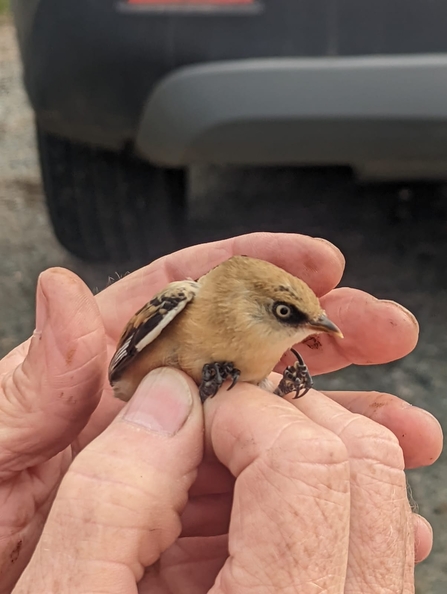Weekly wild news from our reserves - 8 July 2022
Cows chilling at Hen Reedbeds – Dan Doughty
On Wednesday night, as the sun set, our North East Suffolk reserve team set out with moth recorder Anthony Wren for a night of setting light traps and recording moths on our new land at Carlton Marshes. One aim of creating the new habitat at Peto’s Marsh was to expand the existing range of the rare white mantled wainscot moth, which is a specialist moth of coastal reedbeds including those at Carlton, whose larvae feed on common reed. The light traps attracted hundreds of flying insects, amongst which they were delighted to find one white mantled wainscot moth.
Just ottering about
This otter was caught on trailcam at Carlton Marshes having a roll, a sneeze and then playfully jumping into the river!
Another new bee!
This large shaggy bee, Panurgus banksianus, was found nesting rather precariously in the path at the entrance to the Lackford Lakes visitor centre, by Site Manager Will. This is another new species of bee recorded at Lackford Lakes.
Carnivorous bladderwort
The dykes at Carlton Marshes and Hen Reedbeds are full of flowering bladderwort this week. Bladderworts get about 50% of their food from consuming aquatic invertebrates such as crustaceans and larvae. The plants produce bladders, which have a trap door that opens if triggered by a passing insect, sucking the prey in and then closing whilst the plant digests the prey.
Ringed bearded tits
Warden Jamie and his team ringed juvenile bearded tits as well as Cetti’s warbler, reed warbler and reed bunting at Hen Reedbeds this week. The practice of bird ringing goes back 100 years and has led to a better understanding and increased knowledge of birds and bird movements, and ringing allows us to monitor the species and the bird’s longevity. The initial capture allows us to check that the bird is unhurt, to check feather conditions, age and to take measurements. Any captures after this allow us to look at behavioural traits, such as feeding patterns, migration and movement, and population studies.

Juvenile bearded tit ringed at Hen Reedbeds – Jamie Smith
Butterfly bonanza
Lound Lakes Warden Andy was thrilled to reach a count of 26 butterfly species recorded on the reserve this year. Highlights are the silver washed fritillary, white admiral, gatekeeper and purple hairstreak – pictured below. The reserve is also awash with common centaury, ragwort and viper's bugloss which are thriving on the dry acid ground.
Bracken bruising
Warden Dan has been busy bruising bracken at Blackheath Common this week. The bracken roller helps to control the spread of bracken by crushing the bracken fronds and bruising its stems, thus weakening the plant and its overall spread across the site. If it’s not controlled the bracken will dominate and the open habitat will be lost along with important heathland species such as heather, reptiles and specialist heathland insects.
Bradfield beauties
There’s wildlife everywhere at Bradfield Woods! Hewitt's Meadow is buzzing with life and the winter coppice work has paid off with lovely regrowth sprouting. Also seen this week, this rather tatty purple hairstreak and a silver washed fritillary.
Little creatures
This week it’s all about little things at Lackford Lakes, with amazing insect life and a young toad traversing a jungle of grasses.
New sheep pens
Our wonderful team of volunteers at Lackford Lakes have been busy working on new sheep pens this week. These new pens replace an old smaller pen and will accommodate more sheep and make handling easier for clipping, shearing and health checks.
The best of the rest
And finally, here is a selection of wildlife seen across our reserves this week...





















































